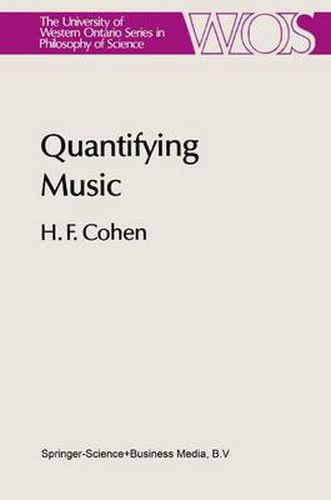Readings Newsletter
Become a Readings Member to make your shopping experience even easier.
Sign in or sign up for free!
You’re not far away from qualifying for FREE standard shipping within Australia
You’ve qualified for FREE standard shipping within Australia
The cart is loading…






This title is printed to order. This book may have been self-published. If so, we cannot guarantee the quality of the content. In the main most books will have gone through the editing process however some may not. We therefore suggest that you be aware of this before ordering this book. If in doubt check either the author or publisher’s details as we are unable to accept any returns unless they are faulty. Please contact us if you have any questions.
The soul rejoices in perceiving harmonious sound; when the sound is not harmonious it is grieved. From these affects of the soul are derived the name of consonances for the harmonic proportions, and the name of dissonances for the unharmonic proportions. When to this is added the other harmonie proportion whieh consists of the longer or shorter duration of musical sound, then the soul stirs the body to jumping dance, the tongue to inspired speech, according to the same laws. The artisans accommodate to these harmonies the blows of their hammers, the soldiers their pace. As long as the harmonies endure, everything is alive; everything stiffens, when they are disturbed.! Thus the German astronomer, Johannes Kepler, evokes the power of music. Where does this power come from? What properties of music enable it to stir up emotions which may go far beyond just feeling generally pleased, and which may express themselves, for instance, in weeping; in laughing; in trembling over the whole body; in a marked acceleration of breathing and heartbeat; in participating in the rhythm with the head, the hands, the arms, and the feet? From the beginning of musical theory the answer to this question has been sought in two different directions.
$9.00 standard shipping within Australia
FREE standard shipping within Australia for orders over $100.00
Express & International shipping calculated at checkout
This title is printed to order. This book may have been self-published. If so, we cannot guarantee the quality of the content. In the main most books will have gone through the editing process however some may not. We therefore suggest that you be aware of this before ordering this book. If in doubt check either the author or publisher’s details as we are unable to accept any returns unless they are faulty. Please contact us if you have any questions.
The soul rejoices in perceiving harmonious sound; when the sound is not harmonious it is grieved. From these affects of the soul are derived the name of consonances for the harmonic proportions, and the name of dissonances for the unharmonic proportions. When to this is added the other harmonie proportion whieh consists of the longer or shorter duration of musical sound, then the soul stirs the body to jumping dance, the tongue to inspired speech, according to the same laws. The artisans accommodate to these harmonies the blows of their hammers, the soldiers their pace. As long as the harmonies endure, everything is alive; everything stiffens, when they are disturbed.! Thus the German astronomer, Johannes Kepler, evokes the power of music. Where does this power come from? What properties of music enable it to stir up emotions which may go far beyond just feeling generally pleased, and which may express themselves, for instance, in weeping; in laughing; in trembling over the whole body; in a marked acceleration of breathing and heartbeat; in participating in the rhythm with the head, the hands, the arms, and the feet? From the beginning of musical theory the answer to this question has been sought in two different directions.